The pandemic and coup sealed off Myanmar's metropolis from the outside world for almost four years. How has the city changed?
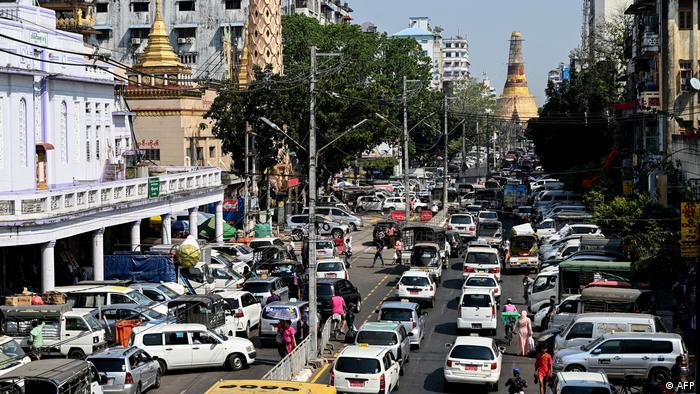
Two years after the coup traffic jams are part of Yangon's street scene again
At first glance, the city has hardly changed compared to the time before the pandemic and coup. In the mornings and evenings, cars are backed up on the main traffic arteries. At night the golden needle of the Shwedagon Pagoda shines over the city. At the weekend, couples in love hold hands at Lake Inya and the middle class flock to modern shopping malls. Among other things, in the “Myanmar Plaza” mall, which was boycotted after the coup because of its connections to the military government.
But at second glance, it is noticeable that concrete bunkers surrounded by sandbags have been built at all major crossroads Windows are covered with an opaque green net, so you cannot see if there are police officers inside or not. It is clear that at least some of the bunkers are occupied, as gun barrels occasionally protrude over the sandbags or helmets lie on the sandbags in a blue-grey camouflage pattern.
Monitored standstill
The longer one moves through the city, the clearer it becomes that Yangon is not like other Southeast Asian metropolises, where life and business are seething. Everywhere in Yangon there are concrete skeletons of large construction projects as memorials of the standstill. Those in power ensure that no resistance arises from the standstill. About “normal” crime ignore this: A person interviewed by DW reported how he went to the police after a bicycle was stolen. As a rule, people no longer go to the police because they do not trust them, but in this case the interlocutor had known the policeman in his neighborhood for many years. The policeman also wanted to help, but said he couldn't because he didn't have enough people. His police officers would have to enforce the curfew at night or look for opponents of the military regime.
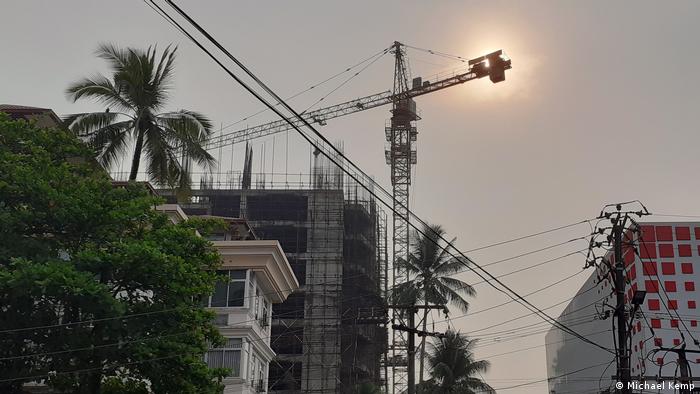
There is a standstill on almost all major construction sites in Yangon
Currently, there is a curfew in Yangon from midnight to four in the morning. If you look out of your hotel room during this time, the city with its more than seven million inhabitants is dead. Only now and then a pickup truck manned by five or six armed police officers makes its rounds through the deserted streets. Whole neighborhoods are in complete darkness.
Economic misery
In the slums there is sheer poverty. Hundreds of thousands don't know in the morning when and how to get something to eat during the day. There are no reliable figures, but unemployment has risen sharply. The pressure is further increased by the large number of refugees fleeing to Yangon from regions where civil war is raging. An interlocutor told DW that the entire family clan from the embattled state of Chin had come to Yangon for security reasons. Only two uncles stayed behind to look after the houses and property.
But even those who have work face difficulties. There has been a lack of orders in Yangon's economic zones since the coup. At a company that makes electronic controls that DW was able to visit, production plummeted by 70 percent. Several halls of the factory complex remain unused. The situation is no different in other factories in the zone, the entrepreneur told DW. Despite this, he has retained all of his workers to this day, albeit without any salary increases, which means a loss of income of around a third with the current inflation.
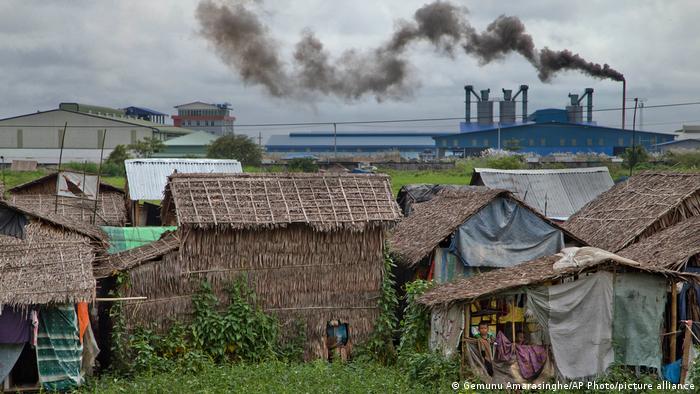
The economy in Myanmar has plummeted since the coup. Poverty is increasing rapidly
Another problem for companies: the lack of electricity. Constant power cuts make production more expensive as diesel generators are purchased to keep the work going. That, says the businessman, is not possible.
The military state is obviously not fulfilling its state duties. It does not protect its citizens from theft and robbery, it is unable to provide them with electricity and the economy is dead.
Even infrastructure projects, such as the new connecting road between the districts of North and South Okkalapa, which are being promoted as prestige projects by the military government, cannot hide the fact that the state is largely absent. A DW interviewee remarked with gallows humor that the street lamps that are set up there are primarily intended for the attachment of signs and advertising, since most of the time there is no electricity anyway.
The big one Exodus
In view of the situation, it is not surprising that most of the people we spoke to talk about worry, frustration and exhaustion, while a few openly speak of depression.
Those who joined the armed struggle after the violent crackdown on peaceful protests in the spring and summer of 2021 have now been largely pushed out of Yangon. There are only rarely attacks or even the murder of military personnel or politicians close to the military, or acts of sabotage. The graffiti with the three-finger salute (the sign of resistance) or the slogans of the revolution can no longer be seen anywhere in Yangon. The armed struggle has shifted from the cities to the border regions.
Others choose a different path: those who can afford it, have the necessary language and specialist knowledge and have no obligations in the country try to leave Myanmar. Long queues, mostly young people, form in front of the embassies of Japan, Korea and Germany when visas are issued. Thousands of refugees arrive every month at the Thai-Myanmar border town of Mae Sot, which has become something of the unofficial opposition capital of Myanmar. The UN Human Rights Council states that at least 72,000 people fled the country between the coup and January 2023.
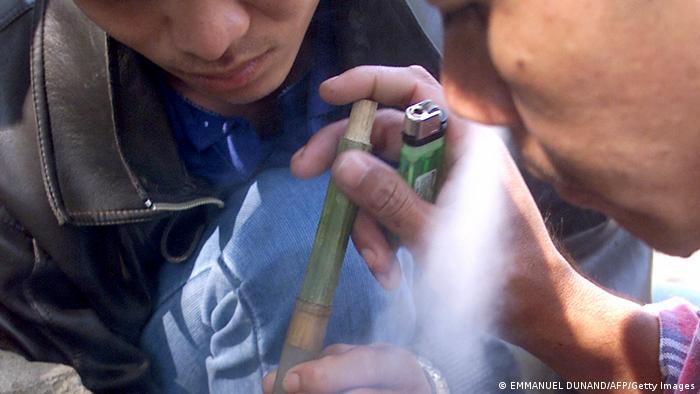 < p>Yangon residents are concerned about the increasing use of alcohol and drugs
< p>Yangon residents are concerned about the increasing use of alcohol and drugs
Another way of escape for those who cannot leave the country is the consumption of alcohol and drugs, which, as all interlocutors confirm, has increased significantly. In new bars and clubs, such as the “Octoholic” on Pho Sein Road, where a giant octopus sculpture holds foaming beer glasses in its tentacles above the entrance, young people are drinking themselves to oblivion. Since the coup, drugs – especially methamphetamine and heroin – have been coming into the city largely unhindered from the notorious drug labs in the so-called golden triangle between Myanmar, Thailand and Laos. Here, too, the police look the other way.
Refuge in religion and art
Another part of the residents turns to religion. Many Buddhists DW spoke to said they are going back to the pagoda more often and have started meditating daily. “It's also a kind of therapy to find your inner peace again,” said one. The masses and church services are also well attended on Sundays, as DW was able to observe.
Last but not least, many new and some long-established art galleries have reopened. The art market is booming and works are being traded at astronomical prices: up to 50,000 US dollars are being sold for a largely unknown artist. Money laundering is probably behind this, as laundering money was difficult during the months of the COVID lockdown and the curfews during the coup.
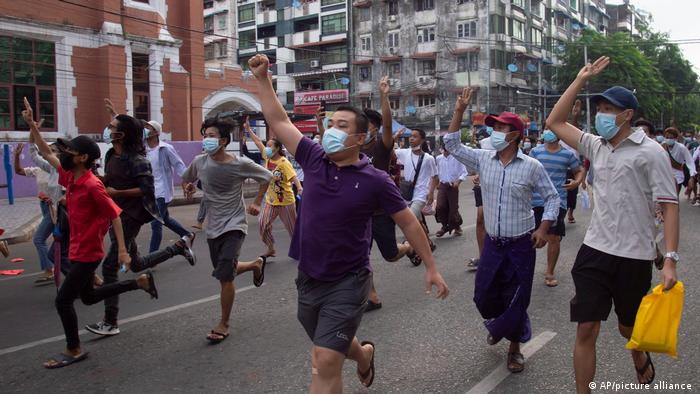
Flash mob protests, i.e. spontaneous gatherings of demonstrators who protest against the military regime, have become rare
< p>An artist still considers this to be a good development. He told DW: “It's good that the artists can work and sell again. Art opens up a space.” He meant a space to express yourself and work on the experiences of the last few years. “People are starting to breathe again after holding their breath for months.”
DW asked another interviewee whether everything was going back to normal. He replied: Nobody wants to live under the military, but we have to live.
A dozen interviews with journalists, intellectuals, artists, entrepreneurs, NGO workers, students, analysts and representatives of embassies and institutions. For security reasons, the DW interlocutors are not identified.